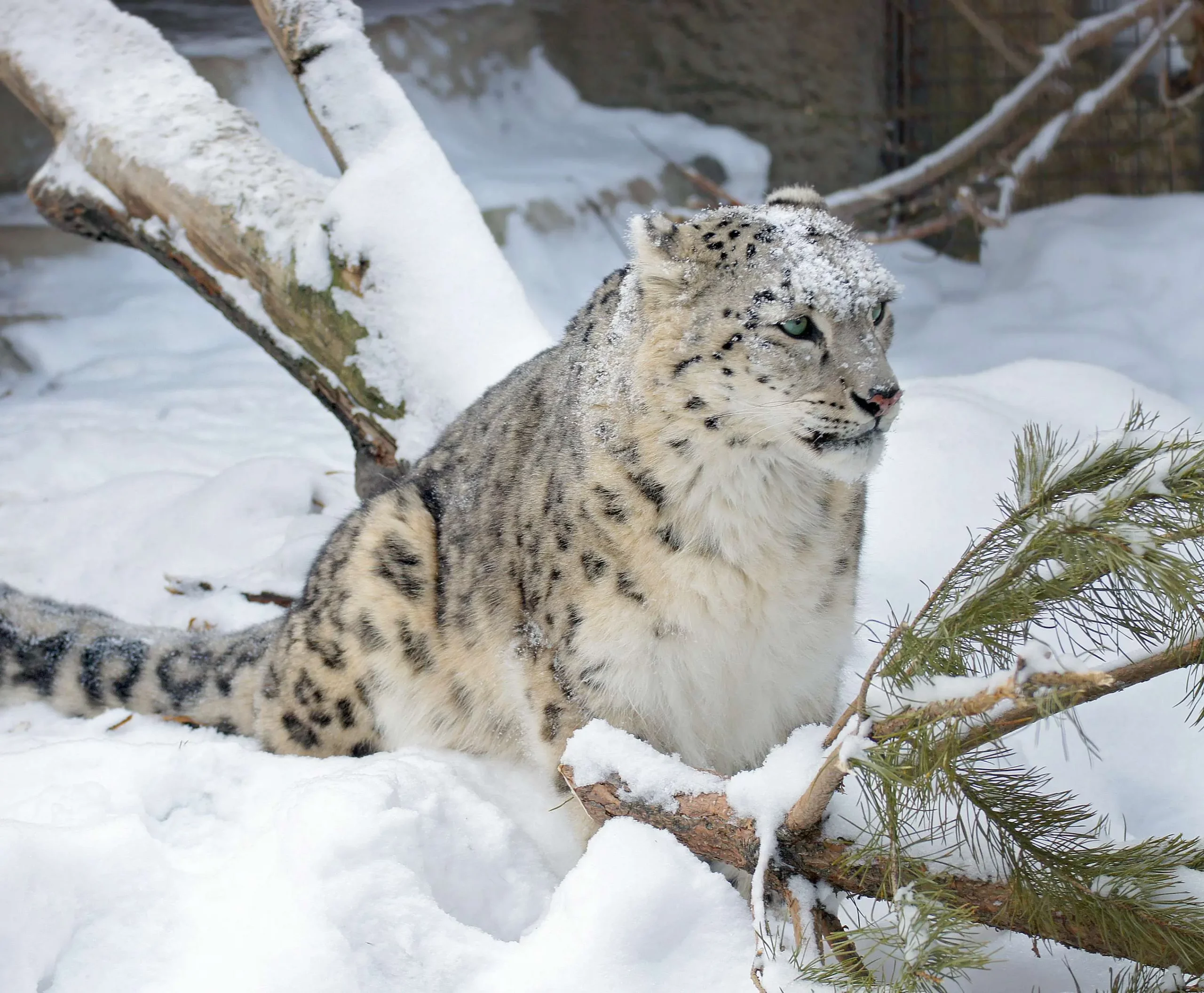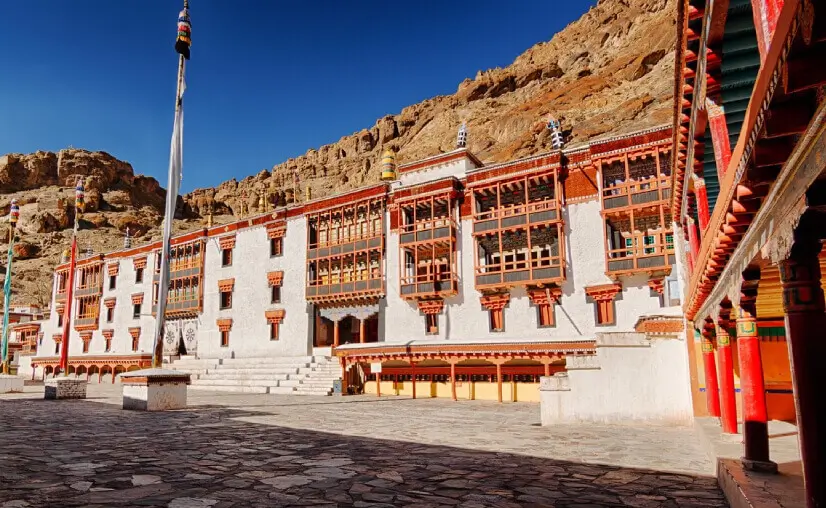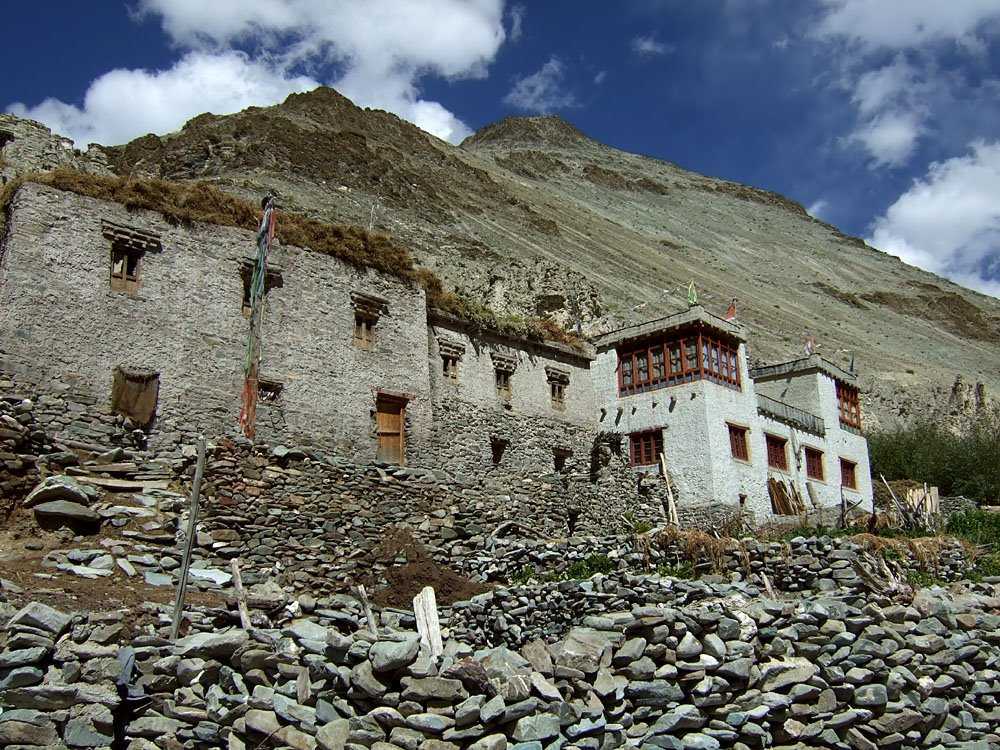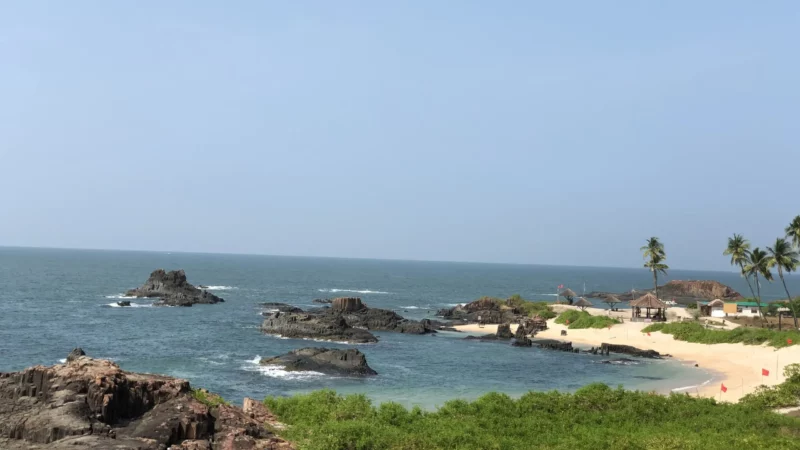Hemis National Park is located in the eastern Ladakh region of the state of Jammu & Kashmir, popularly known for its great heights, and was established in 1981 to protect the decreasing population of wildlife. This area was named after the famous monastery–Hemis Gompa, a 400-year-old Buddhist monastery located on the north-eastern boundary of the park that draws a large number of pilgrims during the Hemis Tse-chu (Mask Dance) Festival, which is considered to be the wealthiest and largest of its kind in Ladakh. Hemis was a halting point for traders on the Silk route and about 2,000 people still live inside the park boundaries. Many of these communities raise poultry, goats, and other cattle that are left to graze, causing conflict between wildlife and the people. This park is situated at an altitudinal ranging between 9,800 ft. and 20,700 ft. (3300 m – 6300 m) above sea level and the park’s eastern and northern boundaries are marked by the River Indus while the western boundary is set by the Zanskar River. The Sumdah, Rumbak, and Markha rivers run throughout the park along with the Ladakh Range. Amongst all national parks in India, Hemis National Park is the only one that is to the North of the great Himalayas and has the largest protected area. The park falls under the Karakoram Range (West Tibetan Plateau) an alpine steppe eco-region with dense pine forests, alpine shrubs, and vast meadows. Hemis National Park is the country’s only protected area inside the Palearctic ecological zone.
Hemis National Park is known by the name Hemis High Altitude National Park (1,700 sq. miles) and is the only national park in the country that is situated north of the Himalayas. Hemis National Park is known for being the second largest contiguous protected area (Nanda Devi Biosphere Reserve in Uttarakhand, India) in the entire country and is the largest National Park in South-Asia as well. This dreamy National Park, Hemis is famous for its unique specialty, the snow leopard (schan in Ladakhi), and one of the few places to witness Eurasian brown bears and Tibetan wolves. Besides the fauna, uniquely fascinating floras are abundant in this Ladakh national park, which offers you a bundle of once-in-a-lifetime experiences.
History of Hemis
 Humans have inhabited this region (i.e., now part of Hemis National Park) for at least 12,000 years ago, with rock carvings. During the first century, the Ladakh region was part of the Kushan Empire and later was under the rule of various empires over the following centuries. Hemis National Park was established in 1981 and has been named after the Hemis Gompa (known as Chang-Chub-Sam-Ling, meaning the ‘place of the compassionate’), which was founded by Lama Tagstang Raspa in 1630. The gompa was commissioned by King Sengge Namgyal and was built by Palden Sara under the patronage of King Sengge.
Humans have inhabited this region (i.e., now part of Hemis National Park) for at least 12,000 years ago, with rock carvings. During the first century, the Ladakh region was part of the Kushan Empire and later was under the rule of various empires over the following centuries. Hemis National Park was established in 1981 and has been named after the Hemis Gompa (known as Chang-Chub-Sam-Ling, meaning the ‘place of the compassionate’), which was founded by Lama Tagstang Raspa in 1630. The gompa was commissioned by King Sengge Namgyal and was built by Palden Sara under the patronage of King Sengge.
Places To Visit In & Around Hemis

Situated right in the middle of the snow-capped mountain ranges of Ladakh, this spectacular Hemis high-altitude national park is a perfect place for an amazing wildlife adventure. Its range of flora constitutes majorly alpine vegetation, like Anemone, Veronica, Delphinium, Gentiana, Salix, Lloydia, Kobresia, Poplar, Birch, etc. Besides, the Hemis National Park is also home to over 15 endangered species of medicinal plants. Its natural habitat dwells over 17 mammal and 73 bird species.



























Mammals: One can witness some rare and endangered mammals of the Indian Himalayas namely the Snow Leopard, Tibetan Wolf (also called wooly wolf, and Mongolian wolf), Argali or Great Tibetan sheep, Red Fox, Asiatic Ibex, Palla’s cat, Eurasian Brown Bear, Himalayan marmot, Bharal (Blue Sheep), Mountain (Pale) Weasels, Shapu (Ladakh urial), etc.
Birds: This Park is ideal to observe and study rare avian life namely the Golden Eagle, the Himalayan Griffon Vulture, and the Lammergeier Vulture—the park’s birds of prey. The patient birdwatcher can spot rare birds inside the park namely the Black-winged Snow Finch, Great Grey Shrike, Red Mantled Rose Finch, Black-Throated Thrush, the Robin Acceptor, Spotted Flycatcher, Himalayan Whistling Thrush, White Rumped Shama, etc. Other rare birds include the Tickell’s leaf Warbler, Fork-tailed Swift, Fire-Fronter Serin, and the Himalayan Snowcock.

The Gotsang Gompa is a Buddhist monastery in Hemis, situated very close to the Hemis monastery. The main shrine is Gotsang Cave, a place for meditation that is located on a mountain slope high above the Hemis Gompa. From 1189 CE-1258 CE the Tantric Master Gyalwang Gotsang (known as Gotsangapa) meditated in this Cave and he was the enlightened Tibetan lama who first charted the pilgrim path around Mount Kailash. One more cave named age-blackened cave is now hidden within the monastic building to the left, one can see this building while you’re climbing uphill from Hemis Gompa. Not accessible through the car, the only possible way is to hike uphill from Hemis Gompa which takes around 1 hour. This monastery is one of the Buddhist centers where you can get a room but only for an overnight stay. Monks are said to retreat within the tiny rooms of this gompa for several years.

Shang Gompa is a refreshing sight, situated in the rugged terrain of the Himalayas alongside the majestic landscapes of Leh and Ladakh. Located around 40 km away from the city of Leh. Shang Gompa is a symbol of composure, tranquility, placidity, levelheadedness, and quietness. The chanting of the monks, the fresh and cool breeze of the mountains, and the incredibility of the monastery are pretty much a mesmerizing and soul-touching experience here. The monastery also retains various intricate paintings of several depicting deities wearing crowns bedecked in jewels and human skulls, holding swords, or lotus flowers, and wearing silken robes and tiger skins. You can reach this Gompa on foot or by motor vehicle.
Best Time To Visit Hemis
If you want to enjoy a hassle-free and pleasant trip, then plan your trip between the months of May and early October. Post-November the Jeep Safari and most trekking routes are stalled due to heavy snowfall. If you are visiting Hemis between June and July, then plan your dates accordingly to attend the Hemis Tse-chu (Mask Dance) Festival. If you are a wildlife adventurous enthusiast, then Winter will be the best time to explore the high-altitude wildlife adventure, and there will be high chances of sighting a ‘snow leopard‘.
Where To Stay
Accommodation
Accommodation is not available in or near Hemis National Park. You should lodge yourself in a homestay at one of the six villages (Rumbak, Hankar, Skiu, Shingo, Yrutse, and Chilling) en route to the National Park. Several gompas and chortens are also located within the park where the visitors can get a room but only for an overnight halt. Nearby in Leh, many resorts and hotels are there according to your budget. While the local food is edible namely Momos, Thukpa, Skyu, Khambir, Tingmo, Butter Tea, Chutagi, etc. You should keep medication (high altitude sickness) and first aid supplies handy in case of any emergency.
How To Reach
Road
You can reach Hemis National Park by road either by the scenic Srinagar-Kargil route from Leh or by the Manali-Sarchu-Dharchu route from the Manali-Leh highway. The roads are well maintained and as a traveler one can enjoy the view of the rugged chain of mountains throughout the whole length of the road. since the Srinagar-Kargil route lies close to the Pakistan-occupied Kashmir border, the route is sometimes shut down by the Indian Army. Regular bus and taxi services are available to the park from Leh. Taxis can be taken up to Hemis National Park.
Train
There are no direct trains available to reach Hemis National Park. Although, you can cover a part of your journey by train. The nearest station is Jammu Tawi Railway Station. After which one must take a bus or a cab to reach this beautiful National Park.
AIR
The nearest airport to Hemis National Park is the Kushak Bakula Rimpochee Airport in Leh.
TREKKING
If you're an Adventure enthusiast and interested in trekking then one can take up a trek to Hemis National Park and the best time to do so would be between mid-June and September. The trail starts from the Spituk Gompa in Leh and passes through Jingchen Valley, before entering the Markha Valley via Ganda La pass. The trek then leads through Kongmaru La pass to reach Hemis National Park.
Thank you for visiting my blog and stay tuned for more updates related to ancient history on my website: Ancientterminus






